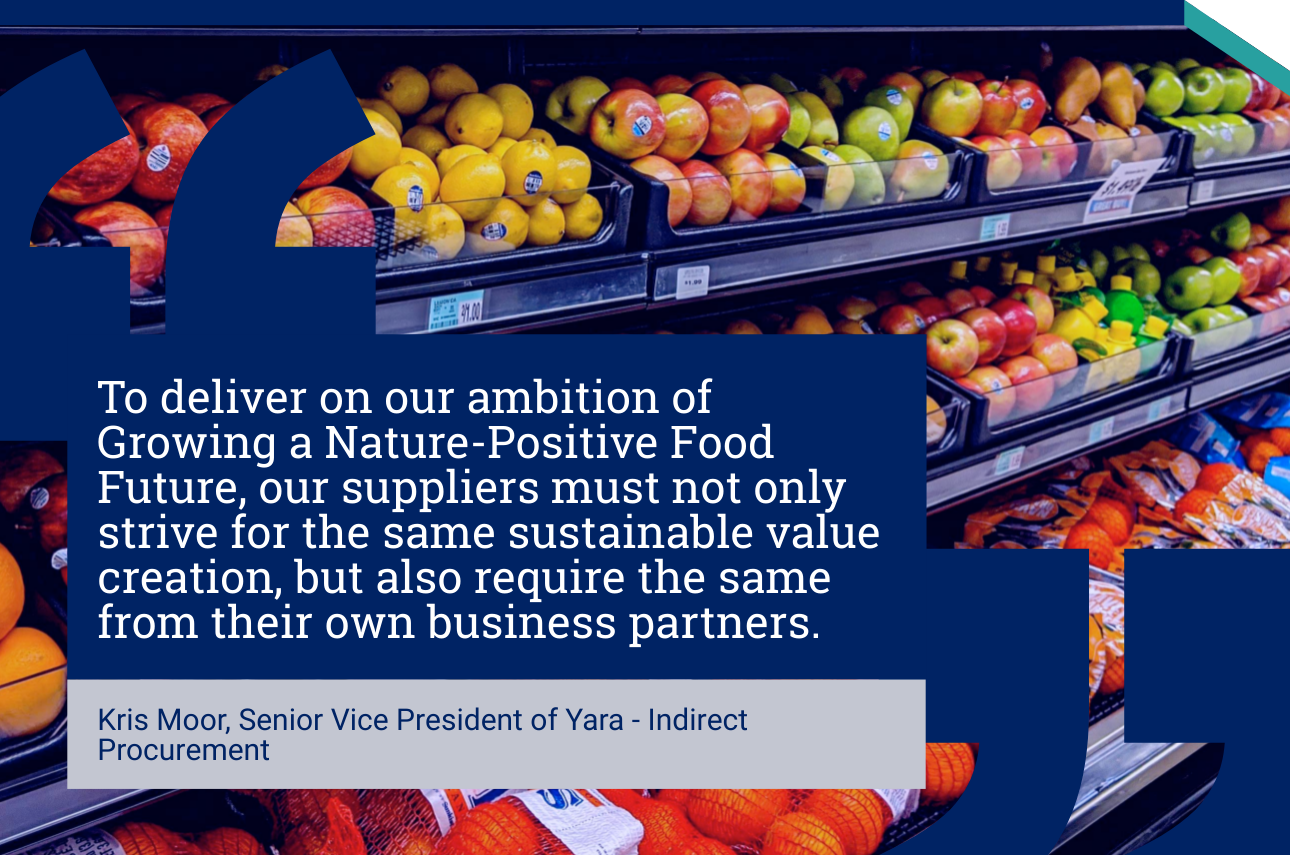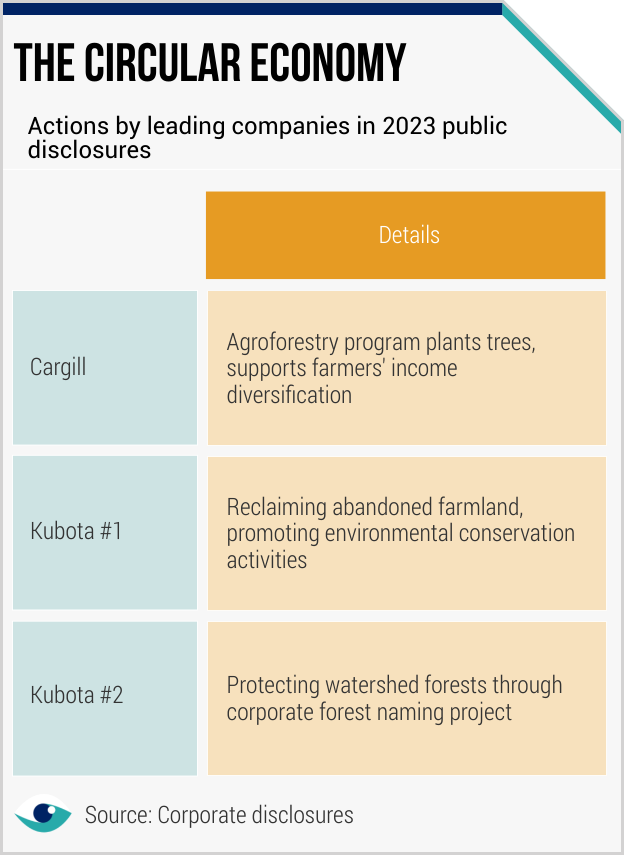Recent findings from the UNEP’s Global Waste Management Outlook 2024 highlight the necessity of a circular economy: adopting a circular economy approach could reduce the volume of municipal solid waste from over 4.5 billion tonnes annually to less than 2 billion tonnes by 2050. Shifting to circular food systems may also lower healthcare costs associated with pesticide use by USD 550 billion globally, according to the UNEP. Businesses must now integrate circular practices in their operations to address waste reduction and enhance sustainability, with potential actions ranging from optimising resource use to embracing innovative recycling technologies.

Resource scarcity compels move towards a circular approach
Sustainability strategies in upstream value chains should be pursued as a competitive advantage
Value chain: upstream
Agriculture, aquaculture & fishing
AT A GLANCE
Globally prominent agri enterprises adopt circular economy approaches to reduce resource scarcity and regulatory risks.
Through circular inputs, smart agriculture and resource recovery practices, producers can conserve resources.
Circular approaches are strategic for businesses to ensure long-term resilience and competitiveness.
Circular materials
Circular economy initiatives, which aim to preserve the value and prolong the life of products, can minimise resource consumption and, as a result, the environmental impacts. Yara worked with suppliers to evaluate its raw material portfolio from the perspective of regulatory compliance and circular economy potential. Tessenderlo offers various products and environmentally friendly solutions, where it typically reclaims and transforms by-products from other industries.
Smart agriculture
Smart agriculture reduces energy and investments while conserving agricultural inputs. Kubota Group promotes automatic operation of farm machinery and water environment solutions to boost crop yields and quality of crops, while using water efficiently. Other leaders such as Coterva, AGCO and Yara also invest in science-based solutions like breeding techniques, biological plant health solutions and precision technology to decrease fertiliser inputs, thereby conserving resources amid scarcity.

Waste-to-wealth
The transformation of waste into valuable by-products is a key circular economy practice. Businesses like Yara sell iron oxide waste to steel manufacturers instead of discarding it to convert waste streams into secondary raw materials that can create economic value. Such practices directly support SASB FB-AG-430a, which addresses the environmental and social impacts of ingredient supply chains. By adhering to environmental standards, businesses can meet investor and regulatory expectations for responsible resource management.

Future outlook
The adoption of circular practices is rapidly becoming a strategic imperative for businesses as more governments advocate for a circular economy transition. The European Commission's projections indicate that circular strategies in the food chain could boost EU GDP by 0.1% and create over 100,000 jobs by 2030. Businesses adopting circular practices are able to reduce input costs and achieve market differentiation by aligning with consumer demand for environmentally conscious products.
FURTHER READING
- Circular material use rate in Europe (European Environment Agency)
- Circular economy in agriculture (Farrelly Mitchell)
- Why businesses must embrace circular economy (World Economic Forum)
